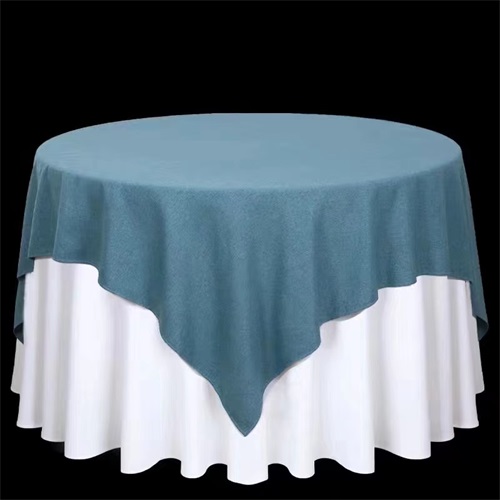如今大環境下,對布草的維護、清潔及選用也提出了更高的要求,針對芯類產品洗滌維護的難點,今天,
濟南酒店布草廠家就來和大家一起分享相關抗菌紡織品方面的知識吧。
In today's general environment, higher requirements are also put forward for the maintenance, cleaning and selection of linen. In view of the difficulties in the washing and maintenance of core products, today, Jinan hotel linen manufacturers come to share with you the knowledge about antibacterial textiles.
一般的紡織品對菌體沒有抑制和殺滅作用,常被認為是滋養微生物的良好媒介。在合適的溫度、濕度以及相應養分下,微生物能夠迅速生長并繁殖,而多孔性紡織品易吸收人體汗腺和脾腺分泌的排泄物,為微生物提供了所需養分,因而某種程度上,紡織品是微生物的支持者。
General textiles do not inhibit and kill bacteria, and are often considered as good media for nourishing microorganisms. Under the appropriate temperature, humidity and corresponding nutrients, microorganisms can grow and reproduce rapidly, while porous textiles are easy to absorb the excreta secreted by human sweat glands and spleen glands, providing the required nutrients for microorganisms, so to some extent, textiles are the supporters of microorganisms.
紡織品上微生物的存在不僅影響其性能,導致菌斑生成,使紡織品產生霉變、脆化甚至變質,而且也會給使用者帶來不適感,甚至對皮膚產生有害刺激,引發皮膚病,危害人體健康。此外,微生物分解人體分泌物所產生的氨等異味物質,也嚴重影響了周圍的環境衛生。因此,對織物進行抗菌整理非常必要,通過對紡織品的抗菌整理可阻礙并抑制微生物在織物使用及儲存過程中的代謝和繁殖。
The presence of microorganisms on textiles will not only affect their performance, lead to the formation of plaque, make the textiles mouldy, brittle and even deteriorated, but also bring discomfort to users, even cause harmful irritation to the skin, cause skin diseases and endanger human health. In addition, the odor substances such as ammonia produced by the decomposition of human secretions by microorganisms have also seriously affected the surrounding environmental health. Therefore, it is necessary to carry out antibacterial finishing on fabrics, which can prevent and inhibit the metabolism and reproduction of microorganisms during the use and storage of fabrics.
不同種類的抗菌劑,其抗菌機理相異,主要有以下三種:
Different types of antibacterial agents have different antibacterial mechanisms, mainly including the following three types:
目前抗菌整理劑很多,主要可分為無機類、有機類和天然抗菌劑三大種類。
At present, there are many antibacterial finishing agents, which can be divided into inorganic, organic and natural antibacterial agents.

無機類抗菌劑
Inorganic antibacterial agent
多為金屬離子以及一些光催化抗菌劑和復合整理抗菌劑。抗菌成份主要是一些金屬離子,如Pd、Hg、Ag、Cu、Zn等以及它們的化合物,通過與細菌中的細胞蛋白結合,使細菌變性或失活。
Most of them are metal ions, some photocatalytic antibacterial agents and composite finishing antibacterial agents. Antibacterial ingredients are mainly some metal ions, such as Pd, Hg, Ag, Cu, Zn, and their compounds, which denature or inactivate bacteria by combining with cell proteins in bacteria.
有機類抗菌劑
Organic antibacterial agent
多為傳統抗菌劑,以有機酸、酚、醇為主要成分,有季銨鹽類、有機硅季銨鹽類及胍類(PHMB)等。
Most of them are traditional antibacterial agents, mainly composed of organic acids, phenols and alcohols, including quaternary ammonium salts, organosilicon quaternary ammonium salts and guanidine (PHMB).
天然類抗菌劑
Natural antibacterial agent
主要有甲殼素及殼聚糖、植物類提取物等。
It mainly includes chitin, chitosan, plant extracts, etc.
紡織品抗菌加工方法主要有共混紡絲法和后整理法。
Antibacterial processing methods of textiles mainly include co-blend spinning method and post-finishing method.
如上所述,由于酒店布草洗滌維護的特殊性,一般情況下,全棉、含滌量低于40%常洗滌類產品不建議采用抗菌整理;含滌量40-50%常洗滌產品,如:件套類、盥洗類紡織品,建議采用共混紡絲法加工而成的抗菌類產品。您對此有怎樣的問題就來我們網站
http://m.xcnmpx.com咨詢吧!
As mentioned above, due to the particularity of washing and maintenance of hotel linen, in general, it is not recommended to use antibacterial finishing for all cotton and regular washing products with polyester content less than 40%; Products with 40-50% polyester content that are often washed, such as sets and toilet textiles, are recommended to be antibacterial products processed by co-spinning method. If you have any questions about this, please come to our website http://m.xcnmpx.com Ask!

